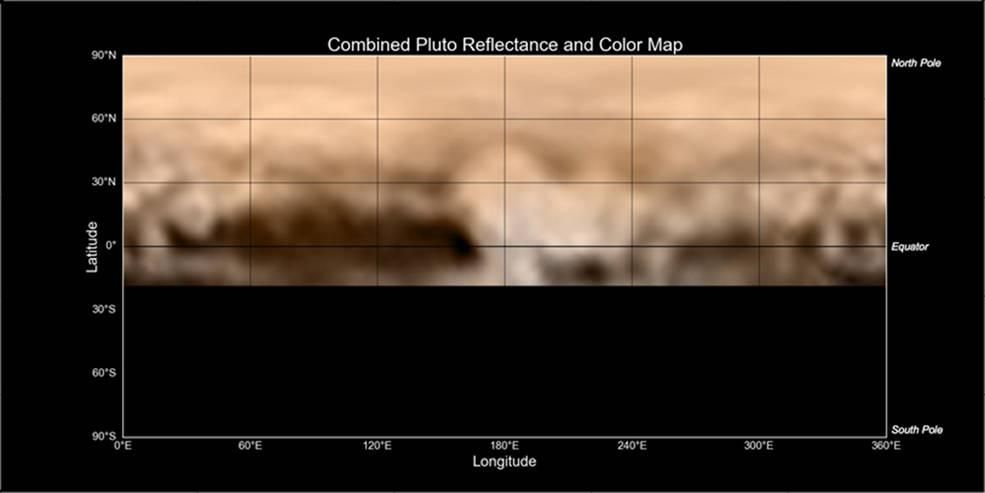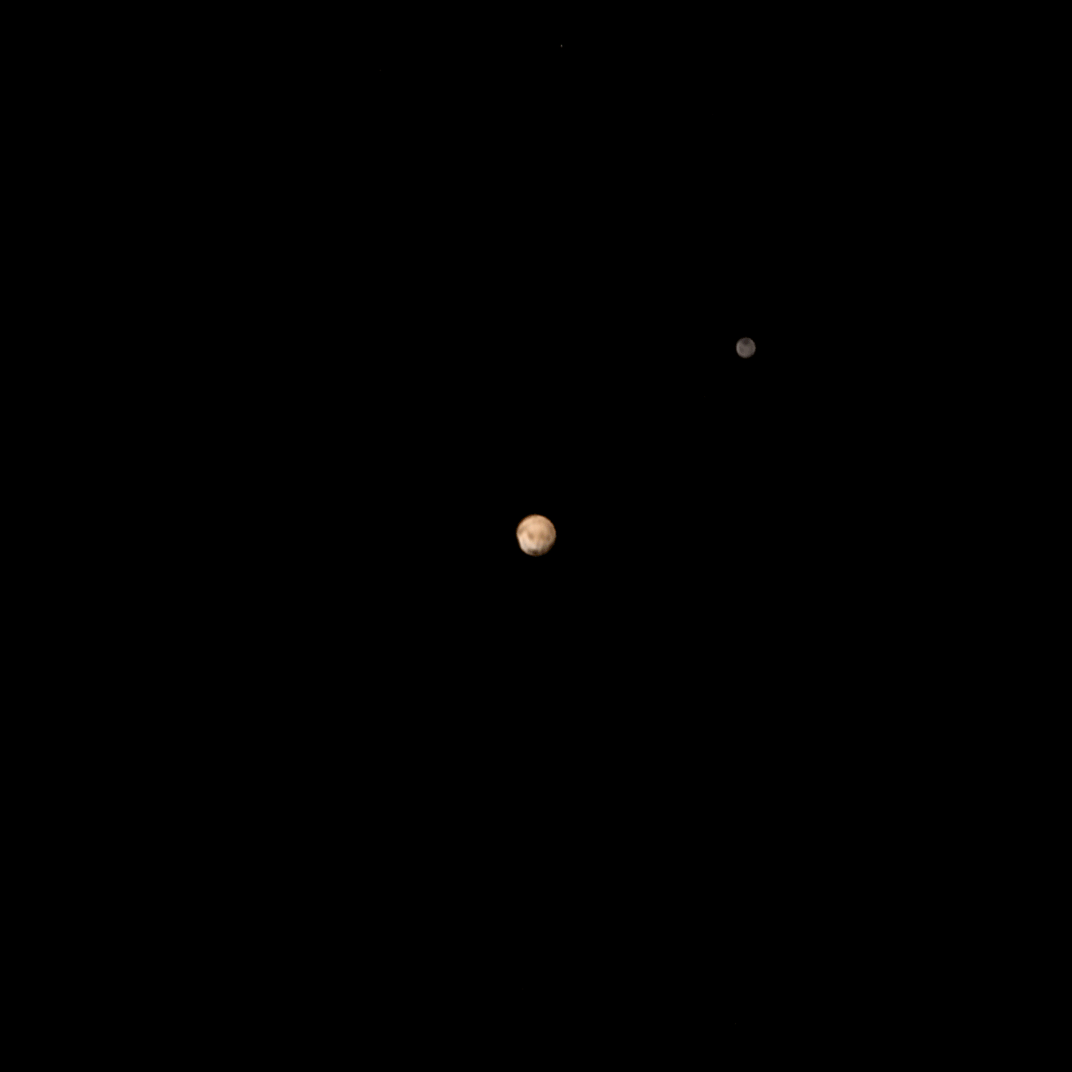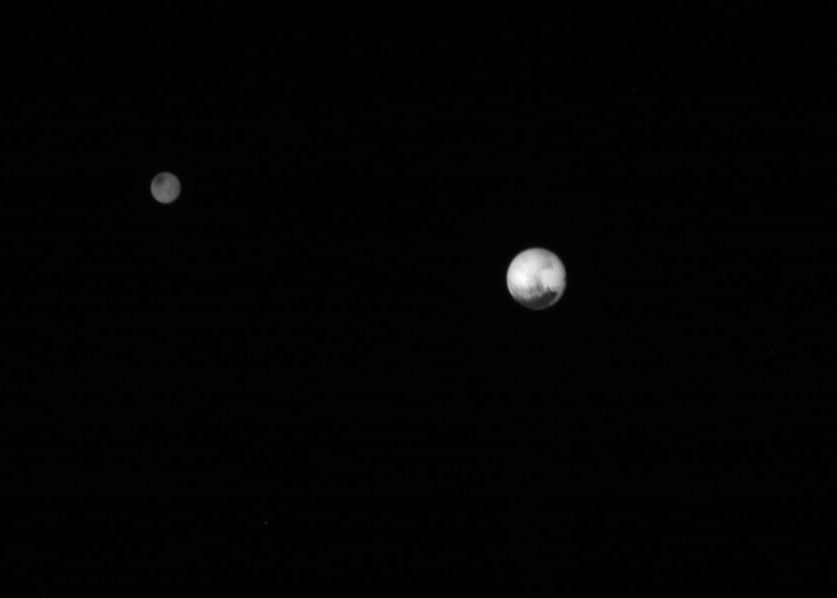Pluto Probe Finds Surprises Ahead of Its Close Encounter
From dark poles to weird “whales”, New Horizons is giving us a taste of the historic science we can expect from its visit to Pluto
/https://tf-cmsv2-smithsonianmag-media.s3.amazonaws.com/filer/b5/01/b501b180-28e5-4130-85ab-f57a325fa6ac/7-8-15_pluto_color_new_nasa-jhuapl-swri.jpg)
Pluto has long been a mystery among the classical planets—baffling astronomers since its discovery in 1930. The tiny world is dark and distant, orbiting so far from the sun that a Plutonian year lasts for about 248 Earth years.
So far, the best images of Pluto and its system of oddball moons have been blurry and showed no surface detail, leaving Pluto's geography trapped in the realm of artists and science fiction writers. What little data we have about its atmosphere and composition has been gleaned from telescopic observations, as no human-made spacecraft has ever come in close for a visit.
Now, all that is about to change. After a nine-year, three-billion-mile journey—and a brief technical hiccup on July 4—the New Horizons probe will get within 7,750 miles of the mysterious world during a flyby on July 14. The spacecraft has been making observations as it closes in on its target, and already it's found things that tantalize the science teams at NASA:
Painted Terrain
If you had asked most planetary scientists before New Horizons launched, they'd have said that it was unlikely Pluto or its largest moon, Charon, had anything like complex surface geology. It's small, so the whole interior likely froze solid long ago, and any surface changes would only be from cratering. That's clearly wrong.
"At this point, we're seeing some areas of interest, no doubt," says mission manager Jimmy Lee. For instance, on June 22 the spacecraft returned images showing surprising dark terrain at one pole. "The dark region at the pole of Charon, we're feeling like there's texturing there," says Lee.

As New Horizons has gotten closer to Pluto, details of its surface have become clearer, notably two features called the "donut and the whale." The "whale" is an elongated dark area, while the "donut" is a bright region. About 1,860 miles long, the whale might be made of hydrocarbons, which get darker as they are exposed to the sun. Meanwhile, the 990-mile-wide donut could be fresh deposits of ices. Another feature, a heart-shaped light area, was spotted as the craft got even closer on July 8. This 1,200-mile-wide area will be seen in detail during the flyby, and mission scientists are eager to find out what it is.
No Rings, Less Danger
Pluto has several moons, all found either by ground-based observations or the Hubble Space Telescope. Some are small enough that Pluto might have rings generated by small impacts, which would scatter chunks of the moons into orbit. While rings would be a fun find for scientists, any unexpected debris would present a danger to the incoming spacecraft. So the New Horizons mission has a team of people tasked with making sure there's nothing in front of the probe that nobody had noticed before.
"I think many of us assumed that, given how many moons have been discovered from Earth-based observatories, that there would be smaller ones that could only be detected from New Horizons," says Sara Hörst, an assistant professor of Earth and planetary sciences at Johns Hopkins who is not on the New Horizons team.
So far, though, the team seeking obstacles has found nothing, neither new moons nor rings. That probably means Charon is clearing out debris from the region around Pluto—and effectively clearing a path for New Horizons. "That's part of why we picked the trajectory we did," Lee says.
Better Sizing
As New Horizons gets closer, it can make better measurements of Pluto's size. This is important for finding out how dense it is and therefore what the bulk composition could be. "We're still trying to get a handle on that," Lee says. So far, most estimates are that Pluto is 65 to 70 percent rock and 30 to 35 percent ice, but those are very rough figures. There might even be a liquid layer of water under the surface.

Based on telescope data, there's also been some concern that Pluto's thin atmosphere is throwing off our size estimates. That's something New Horizons should be able to clear up. Charon, meanwhile, doesn't seem to have an atmosphere at all, but New Horizons isn't yet close enough to tell for sure. And Lee notes that Charon orbits close to Pluto, about 12,160 miles from its center, so the two might even share an atmosphere. "This is the first double planet-type system we've seen in our solar system," Lee says. "So finding they shared an atmosphere would be cool."
What's Ahead
The probe carries three imaging instruments, one of which works in ultraviolet light. It also will measure the solar wind around Pluto, count dust particles, measure the spectra of charged particles and probe Pluto's atmosphere with radio waves. Lee notes that the atmospheric work will begin in earnest as the probe swings by and passes Pluto to get a "backlit" look at it. Gathering data on the sunlight at ultraviolet wavelengths passing through the atmosphere can help determine its composition. In addition, New Horizons will use its Radio Science Experiment to send radio waves through the atmosphere to see how thick it is. It will do the same for Charon to see what kind of air the moon has, if any.
"One of the things that I am most excited to find out from New Horizons is whether or not Pluto currently has a haze layer in its atmosphere," Hörst says. "We have a couple of different examples of [nitrogen-methane-carbon monoxide] atmospheres in our solar system: Titan, Triton and Pluto, and I think we can learn a lot about haze formation in planetary atmospheres. … I'm hoping we can test some of our ideas about haze formation on Titan by looking at Pluto's atmosphere."
Better images of the surface will enable the NASA team to determine what its chemical makeup is, and from there, understand the evolution of the solar system. Many planet experts think that Pluto might be made of material that most resembles the very early solar system environment and so might offer insight into what the early planetary nursery was like. And after the flyby, mission managers hope to send New Horizons deeper into the Kuiper belt to study a Pluto "cousin", offering even more data on the solar system debris that's been locked in deep freeze far from the sun.

The combined data will help us see Pluto in a new perspective. "Right now we are still just getting our very first up close views of this world, and for the first time being able to craft an image of Pluto in our minds that is based in reality," Hörst says.
And based on what we've seen even before the spacecraft's closest encounter, Pluto is far from a simple ball of rock and ice, adds Katie Mack, a theoretical astrophysicist at Melbourne University. "New Horizons will offer our first real maps," she says. "Pluto is becoming a real place, and it's more exciting than I thought it would be."